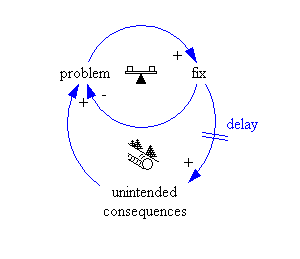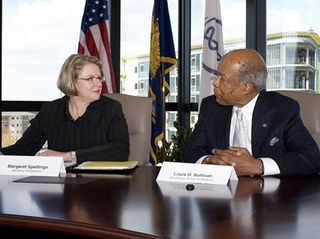A family is a delicate edifice with a natural tendency to fragment, split, and move in different directions over generations. New people enter as spouses and children with their own interests, preferences, and lifestyles. But when a family shares ownership, oversight, and dependence on shared investments, they challenge this tide. Such connected, “enterprising” families must work continually to head off and manage conflict between an ever-enlarging pool of family members, who share blood but know each other less.
They often fear conflict because they are more of a mystery to each other. While a second generation of brothers, sisters, and cousins know each other while growing up, as they get older, they tend to grow apart and see each other only at rare and restrained family gatherings.
They may be relative strangers, but they could share ownership and potential ownership in significant businesses, investments, real estate, and philanthropic assets. Because of the deep emotional family history, they cannot just be business partners coming together to exercise rational self-interest. Other ties must be taken into account, like whose uncle did what to your father or how your siblings are being treated in a business. Actions that are “just business” can hurt personally, and the personal hurt can lead to anger and conflict in other areas.
So a family that remains together as partners over three or more generations should always put family communication, conflict resolution, and alignment of interests at the top of their list of critical challenges. They should look for professional help to anticipate or deal with their differences.
The professional often tries to help by convening a family meeting, like a focused gathering of family members (defined in various ways, depending on the context) to discuss the conflict, provide alternatives, and take action on troubling issues. This seems reasonable and simple, right? Yet, I hear many stories where getting together was not just not helpful but led to feelings that make further contact even less likely while the problems remain simmering.
“We had a family meeting, and it was terrible.”
“No one wants to get together a second time.”
“Things came out that were better left alone.”
“Dad (or Uncle Jerry, or cousin Bob) had a meltdown and walked out.”
“No one listens to me because….”
Poorly planned and executed family meetings can further traumatize a family even when a professional brings them together with the best intentions.
Setting the stage for a family meeting
Nothing is as difficult as the first moments when an intergenerational family comes together as a whole.
While not total strangers, they are a collection of differing styles, viewpoints, values, ages, genders, and often ways of living and working. Their whole lives may be formed regarding the benefits of this legacy, but it does not change the reality that they may be strangers to each other.
Even smaller family meetings—such as of parents and their adult children—share this anxiety about starting. The feeling of awkwardness or the fear that one person will dominate, that others will not be heard, or that a business issue will trigger deep family emotions may lead to avoidance. A family expresses this by finding it difficult to schedule the meeting, postponing it, or limiting the time together.
The problem is that family members may not know how to create an environment for effective communication. They enter a strange environment without knowing how they can act to overcome the emotional traps and bad habits that they have eluded over time as a family. The first family meeting must make people feel safe to talk to each other in a respectful way and to be listened to by others.
One way to create a safe harbor in the meeting is to start by having the family create what we call a code of conduct that is about how they will talk to each other, not what they will talk about.
A code can be a guide to the difficult process of communicating in a fair and safe manner. It is a list of rules (or expectations) for communication that everyone agrees to hold each other to when they meet or interact as a family. Often a family has many bad habits—dominating, interrupting, blaming—that inhibit communication. A family meeting must begin by confronting these bad habits and deciding to help each other change. They are like addicts who have to support each other to make difficult changes. The regular family “rules” used to deal with personal relationships and emotional realities may be counterproductive for a family meeting. The family rules need to change or adapt to meet the difficulties of family members defining their future and agreeing on policies.
Creating the code of conduct
Developing a family code of conduct might start with each family member sharing something that they feel the family has to agree on in order to have a safe harbor for communication at the meeting. This gives each person a chance to share their anxieties before things start. It is not hard for a family member to begin to talk about things that inhibit communication.
The first things that inevitably come up are things like “Don’t interrupt,” “Get everyone to talk, not just the people who always dominate,” or “Talk about yourself without blaming others.” Each of these can be discussed and defined by the family as a principle of communication. When the family is done, they should write the principles on a large piece of paper and place it on the wall so that everyone can see them through the entire meeting. The more each family member can express concerns and feel that others have heard them and that the code reflects their own family, the more committed the family will be to them. They understand that the code marks the family’s entry into a new way of working together, which will be difficult for them as it means overcoming earlier habits.
Some facilitators begin the discussion with a list of behaviors for good communication. For example, many use the four principles defined by anthropologist Angie Arrien as a guide, which echo another set by Steven Covey:
- Show up.
- Pay attention.
- Tell the truth, without blame or judgment.
- Be open to outcomes, not attached to an outcome.
This is helpful only if family members have a chance to talk about how each rule would look if it were practiced by their family. They are deceptively simple and easy to think up but hard to practice. The point is to actively engage them and move them from good ideas to practical tools to guide behavior that they accept.
After such a discussion, the family will come up with a set of ground rules for communication that they agree will make them more effective. Setting up (or reminding people about) rules or a code of conduct should always be the first topic on the agenda of a family meeting (even if the meeting consists of three people). The family may define a code that they use for every meeting, but at the beginning, they need to be reminded of it. Each person will come into a family meeting with fears about talking and concerns that what he or she wants to share will not be heard or respected.
There are many types of statements in a family that act as “emotional triggers” that give rise to memories of other events that were hurtful. These memories may bring upset feelings or anger to the surface. Rules about behavior can’t always stop these triggers or the eruption of feeling the triggers generate, but they can limit them. At their best, rules can help a family consider other ways to deal with being upset. Also, the presence of other family members at a meeting can sometimes help two people who are upset over something take a step back and look at what is actually happening.
So when there is a code of conduct, who is in charge of policing it? And what happens if someone doesn’t follow it? This role can be jointly handled by a facilitator, the person—a family member or outside helper—whose role is to make sure the meeting goes well for all family members.
A family often allows anyone to break in and observe that someone is not observing the rules. For example, a working family may find family members making comments like “He isn’t finished” or “Let’s slow things down. People seem to be getting upset.” These process comments show that all family members feel responsible for adhering to the rules and are able to call each other to account.
Core purpose
A second element of the family code of conduct is setting clear expectations for its purpose, what the group is doing, and when or how decisions will be made.
Each meeting should have a core purpose or a focus that guides the conversation. This might be to learn about the structure of the family trusts, to learn what we all want for our family philanthropy policies, or to plan for the new family leadership. Having a focus helps make the meeting safer in that there is a sense of what will be off-limits or what issues can be shared. Sometimes the agreement is that a person can raise an issue, but any individual can decide that they don’t want to talk about it. Or, there may be an agreement that decisions will not be made and that the purpose of the meeting is to learn about each other.
These understandings about the nature of the meeting and its focus are part of the code of conduct and allow family members to feel comfortable with what will and will not be talked about. This sort of understanding is often critical to having one or more individuals decide to participate in the meeting.
Beyond the family meeting
In summary, a family code of conduct is a set of agreed-upon rules and understandings that a family creates to make a safe, comfortable, and positive setting for family communication in a meeting. A family often has one general code of conduct that they adopt for all meetings, and they may also have some agreements about the purpose they add for an individual meeting. Each meeting begins with a discussion of what the ground rules for that meeting are, beginning with the general code the family has drafted.
The family that adopts a code for behavior in a meeting may decide that the rules are important not only in meetings but in their relationships in general. The whole family may agree to strive to adopt these standards for all their communication and behavior together. The code of conduct may become part of their family mission, vision and values, and their family constitution.
—
Are you a Saybrook University alumna or faculty member who is interested in submitting a blog post for potential publication on UNBOUND? You may do so by submitting your finished piece or pitch on the right-hand side panel of UNBOUND pages.




































